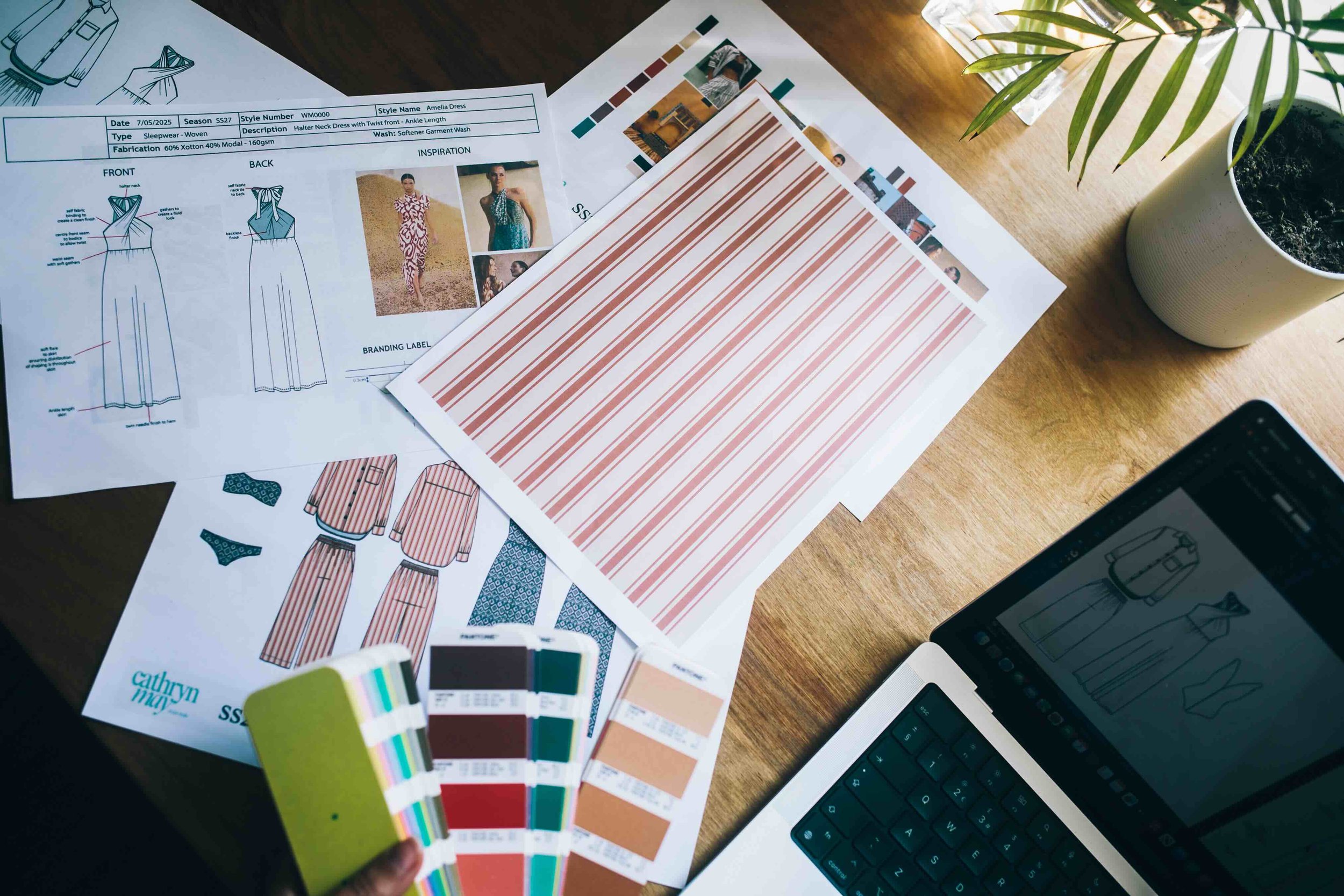What is a ‘tech pack’ I hear you say?
If you have been looking at setting up a fashion brand, you have probably heard the term - tech pack, technical pack or even known as a factory tech pack. They all mean the same thing. I am sure you have wondered what is a tech pack?
In short: A tech pack turns your ideas and concepts into a clear, communicable, and manufacturable product. Whether you're a seasoned designer or launching your first line, mastering the tech pack is a must in the fashion industry.
Most factories wont cost a garment without recieving a tech pack. It’s that document you need at the first touch point to find out if the factory is right for you and your brand.
Factories are not mind readers, and the language barrier can also not help. Your factory or manufacturer needs to know what you want, as they are not mind readers - and trust me you don’t want them to go rogue (as many like to do!)
Without clear guidance, you can easily end up with the wrong fit, fabric or construction or sometimes an additional design feature! A factory tech pack bridges the gap between design and production by:
Reducing errors in sampling and any misunderstandings on the design or language barrier.
Ensuring product consistency, capturing all those small details that make your design unique.
Speeding up the development process - trust me, with a bad tech pack you can go through several rounds of sampling which will cost you money.
Providing a reference to the factory for costing, sampling, and quality control
So what should a tech pack include I hear you ask?
Though the content may vary slightly depending on the brand or product type, a comprehensive tech pack usually contains:
Technical Sketches
Also known as flats or CADS, these are digital detailed, black-and-white line drawings showing the garment from multiple angles — front, back, side — with stitching and construction details - and zoom ins of any specific details that make the product unique to you.
BOM aka the Bill of Materials
You might be wondering what a BOM is - but this is a list of all the materials used in your garment: fabrics, linings, trims, zippers, labels, even down to the thread types.
Construction Details
Specific instructions on how the garment should be made — stitch types, seam finishes, placements, and techniques.
Measurements and Size Specs
A size chart with detailed measurements for each size (e.g., bust, waist, hip, inseam). This helps maintain sizing accuracy during sampling and bulk production - and tells your factory exactly how you want it. This is where my understanding of fit and proportions shine through. This shows the grading for each size you require.
Colour ways or ‘options’
This is a page showing what colours you want - which will include the Pantone codes or print or yarn dye information.
Label and Packaging Information
Guidelines for care labels, brand tags, and where you want them placed in the garment - Also including information on how item should be folded, packed, or hung - as you need that garment arriving in a sellable condition!
Fit Comments / Revision History
Finally - a tech pack is a working document .As samples arrive, you will update with any fit comments or changes that you want to make. It becomes a log of any updates made after fittings or sample reviews, so everyone stays aligned.
So I am sure you can understand why tech packs are important - as it brings your idea to life.
I hope this blog post has helped you understand one of the design processes now, as you can see - a tech pack is a very important part of the design process. One that you can not avoid to skip - as trust me you can get a tech pack wrong and this will cost you. In time and in money.
If you want help in building a strong and cohesive tech pack, please do get in touch. I offer a free 20-minute discovery call, so we can get to know each other and talk through your needs.
Head to my contact page to organise a time that suits you. I’d be thrilled to hear about your brand or project.

